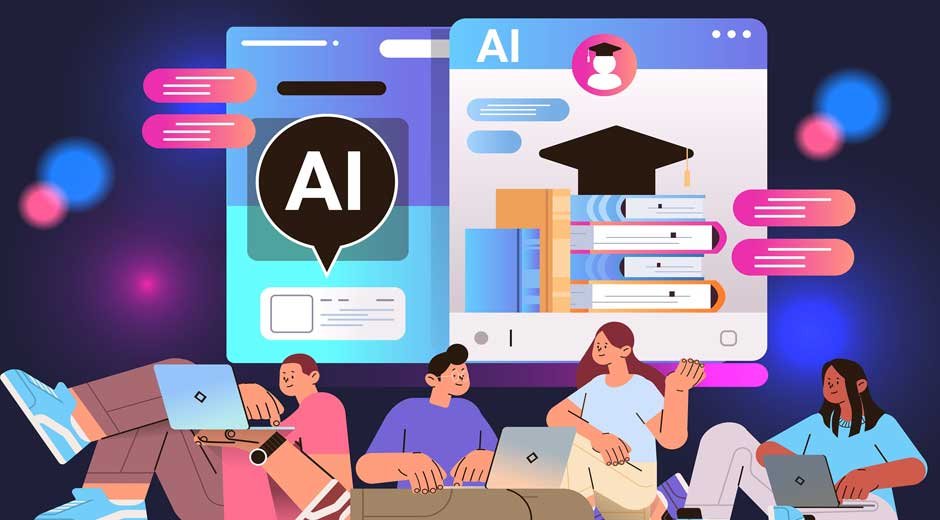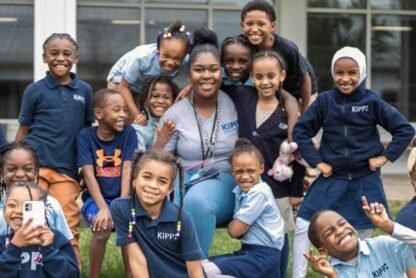AI has been a boon in almost every sector of society. But when it comes to teaching, AI has surpassed everyone’s expectations!
According to statistics, the use of AI in education is expected to reach $6 billion globally by 2025.
Even though there are concerns surrounding the quality and methods utilized by AI in schools and colleges, it’s obvious that AI has become a game-changer for both students and teachers.
So, if you’re a teacher and you want to know how AI can personalize learning for every student, then here are some innovative answers!
1. Helps in Adaptive Learning
When you use AI platforms like Alayna for personalized learning, they help in designing curriculum and material according to students’ knowledge foundation. It can design slides that can make concepts more easy to digest for students.
Based on children’s age and previous learning, they can also generate special notes to clarify concepts better.
It also uses machine learning to conduct adaptive quizzes, where the questions are designed based on each child’s expertise and progress.
You can also generate homework assignments that cater to students’ respective understandings so they don’t feel overwhelmed.
2. Maintains Pace for Students
In a conventional classroom, not every student will be able to grasp lessons at the same pace. While some students may easily understand the concepts being taught, others need more time and exposure to learn these chapters.
For teachers, it can get incredibly difficult to devote extra time to students who need more help with their lessons.
This is why AI-based educational platforms have come up with innovative worksheets, question-answer sessions, and small snippets to make sure no student gets left behind when a certain topic is being taught.
Students can easily be on par with their peers and not feel like they’re lagging.
3. Creates Custom Passages
When it comes to reading lessons, small children may often struggle with reciting out loud clearly or getting the hang of words.
With AI platforms, you can create custom passages for every student and also give them comprehension questions based on the student’s choices and inputs.
This can be an especially powerful tool for children who are slow readers or aren’t able to pronounce words properly.
Using a reliable AI platform, you can add audiovisual aids that can help teach children how to pronounce words, starting right from a very slow pace and then gradually increasing it.
It can also be beneficial for reluctant readers because it involves their interests and stimulates how they think.
4. Provides Accurate Feedback
When a teacher conducts a classroom test or quiz, they’re only looking at how the entire class performs as a whole. Even if they check individual performances, it can be difficult to give each student the feedback they need.
But with the rise of AI software, things have become much easier. On an AI platform, you can upload students’ assessments and assignments and let the platform share feedback.
It takes several metrics into consideration and prepares a comprehensive report, where the teacher can carefully analyze each aspect of the student’s performance. This will help them give sound feedback to prevent any further learning gaps in the lessons.
5. Natural Language Processing
AI-based natural language processors are pros at understanding the specific areas where a child might require help.
NLPs allow the development of intelligent chatbots and virtual assistants that can share details about where students need help using simple, conversational, friendly, and adaptive language.
For example, if a student has doubts regarding a particular chapter and isn’t able to understand the teacher’s explanation, teachers can easily ask the AI-powered chatbots for help. These bots are designed to grasp the language that students are comfortable understanding, so the answer is given to them in a way that can support students’ learning journey.
Conclusion
Since AI platforms provide a host of ways to personalize classroom learning for students, no child feels embarrassed or shy to ask questions.
This not only fosters creative learning but also gives each child their own space to grow and understand lessons.
As a teacher, it’s now time for you to start looking at some cool AI-based education providers and help your students become pros at personalized learning!









